Advertising and Marketing are two different aspects of a business but are often used as a substitute for the other. They have unique features and roles but can be combined for a comprehensive promotional approach.
In this detailed blog, we learn about the difference between advertising and marketing in detail with the help of examples.
What is Marketing?
Marketing is a full-fledged approach that includes every effort a company makes to promote and sell its products and services. Research, product development, pricing, distribution, and Advertising are all part of marketing, but it also emphasizes other aspects like brand building, customer support, public relations, and revenue generation.
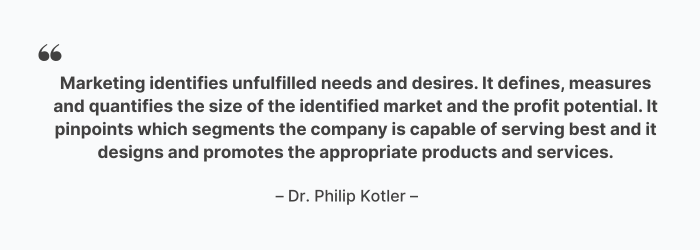
Types of Marketing
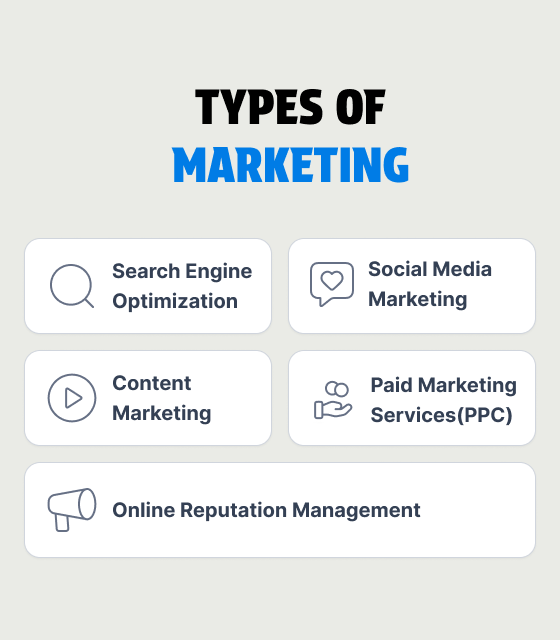
1. Content Marketing
Content creation in the form of blogs, social media posts, video descriptions, and podcasts comes under content marketing. It has a huge potential to connect with audiences by sharing valuable information related to the products or services.
2. Social Media Marketing
Organic and paid marketing through Facebook, Instagram, X, and LinkedIn is a part of social media marketing. Companies post about products, offers, new arrivals, and company updates to spread their messages to their targeted customers regularly.
3. Search Engine Marketing
Pay-per-click marketing through Google and Bing Ads is called search engine marketing. Brands create search, display, and video ads to target their customers based on the chosen objective. Running search engine ads improves brand credibility, creates awareness, and generates sales as well.
4. Influencer Marketing
This is the most evolved marketing, which uses celebrities, experts, and people with high followings to promote products/services. Brands are investing a lot in influencers to earn followers, orders, and brand recognition in the market.
5. Email Marketing
It is one of the oldest types of marketing but still has its charm. Email marketing has the highest return on investment (ROI) of all digital marketing channels, according to 30% of marketers worldwide. It is highly effective in B2B and B2C marketing; it keeps you connected with new as well as existing customers.
What is Advertising?
Advertising is a crucial component of marketing. A specific approach entails promoting a brand, service, or product to reach potential customers using multiple channels. The main objective of advertising is to create awareness, consideration, and engagement and entice users to act.
Types of Advertising
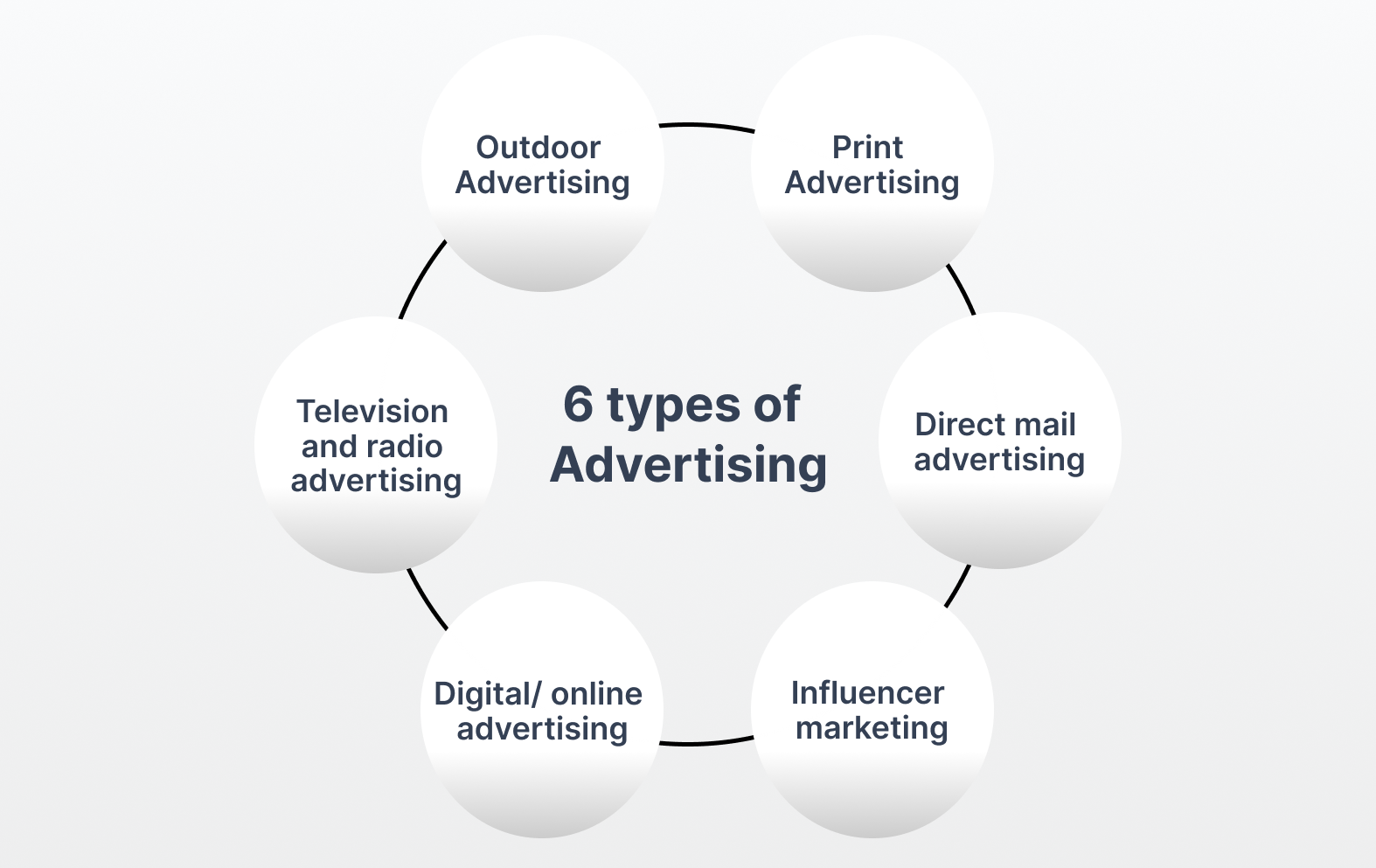
1. Print Advertising
It is the most ancient type of advertising, and it is still relevant today despite digital media. It uses newspapers, magazines, flyers, direct mailers, and brochures to promote a brand’s offering.
With print advertising, you can create mass awareness with just one ad. It is highly impactful for some businesses whose audience still reads print media.
2. Digital Advertising
Digital advertising contains a myriad of platforms, such as advertising through social media, PPC, video, and email. Brands run text, video, banner, and story ads to engage with the customers.
It provides higher conversion, better reach, and increased user retention of the brand. It is the most important advertising medium deployed by marketers today due to its huge reach and cost-effectiveness.
4. Broadcast Advertising
Television and radio are omnipresent advertising channels that are going to stay for a long time. These channels have a loyal base of customers, and running ads on TV and radio works like magic for D2C brands. Brands are experimenting with connected TV ads on Apple TV, Amazon Fire TV, and Roku TV.
10 Key Differences Between Advertising and Marketing
We learned the basic definition of marketing and advertising; we shall dive deeper into understanding the key differences between them. You can get a gist of the differences from the table and explanation in the later part.
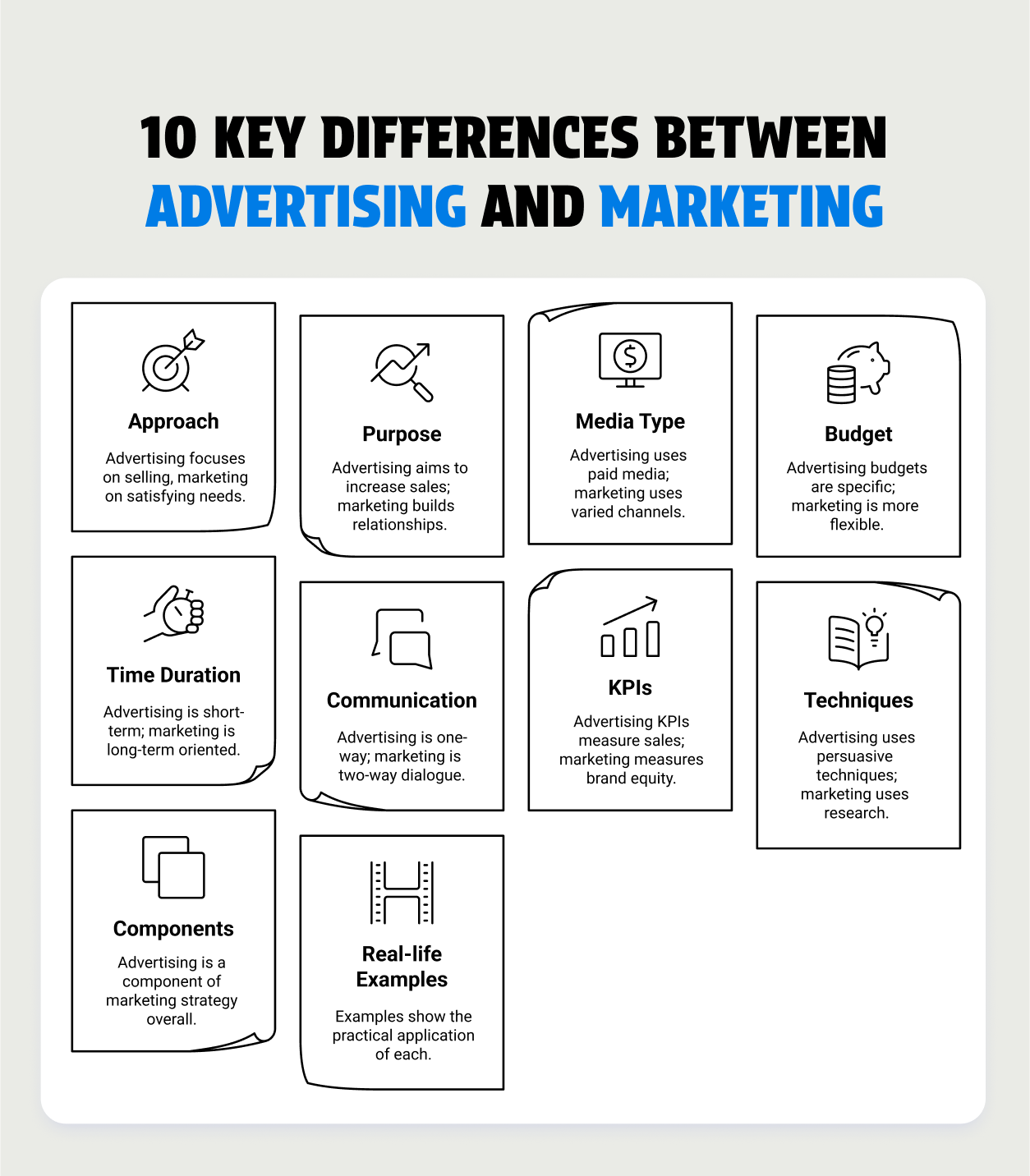
| Parameters | Marketing | Advertising |
|---|---|---|
| Approach | Broader | Specific |
| Purpose | Build Long-term connection, Brand Building | Draw attention to product/service ad |
| Media Type | Paid, Owned, and Earned Media | Paid Media |
| Budget | Intangible | Tangible |
| Time Duration | Medium to Long-term | Short-term |
| Communication | Two-way | One-way |
| KPIs | Annual Revenue, Retention Rate, Net Promoter Score | Reach, Conversion Rates, CTR, ROAS |
| Techniques | Organic and Paid Channels | Paid Channels |
| Components | Creating awareness, ORM, Build Brand Trust and Loyalty, Sales | Product Purchase, Application Download, Build Interest |
| Examples | Email newsletter, Tutorial Videos | Display Ads and Video Ads |
1. Approach
- Marketing is a comprehensive approach that includes everything a brand does to keep it going.
- Advertising is a task-specific approach where brands run a campaign for any product or sale season.
2. Purpose
- Marketing is the accumulation of strategies used to boost sales, develop a value proposition, and satisfy consumer demands.
- Advertising is a subset of marketing, which is used to fulfill marketing goals. It comes under Promotion, one of the 4 P’s of the Marketing Mix (product, price, place, and promotion).
3. Media Type
- Marketing involves all sorts of media types, from paid to owned to earned media, due to its cross-functional approach. It can be done through how-to guides blogs (owned media), Instagram ads (paid media), and press releases (earned media).
- Advertising mostly relies on paid media types, as it requires the ad to be placed somewhere in exchange for a price. Running ads on search engines, social platforms, or a billboard requires money to be paid. (paid media).
4. Budget
- As Marketing is a slightly long-term approach, it can require a large budget to cover all aspects, including product development, distribution, advertisement, and brand building.
- As Advertising is more campaign-oriented, it can require a fixed budget as per the campaign goal. The budget is mostly centered on media buying, creative campaign building, and optimization costs.
5. Time Duration
- Marketing is a continuing approach. It's an ongoing process that improves over time to strengthen market positioning, foster brand loyalty, and eventually grow the company’s revenue year over year.
- Advertising is a periodic approach that has a brief lifespan. An ad campaign is created to introduce a new product or advertise a summer sale that can last for a few days or weeks.
6. Communication
- Marketing is a two-way communication that builds a genuine relationship with customers over time. It recognizes consumers’ feedback, reviews, and comments to optimize its strategy
- Advertising is one-way communication in which a marketer presents their message to consumers. It's a means of informing consumers about the promotion. Brands can run ads to raise awareness, generate engagement, or drive conversions.
7. KPIs (Key Performance Indicators)
- Marketing efforts can be measured by tracking the company’s:
- Sales growth rate
- Customer retention rate
- Net profit margin
- Customer acquisition cost
- Customer’s lifetime value and satisfaction scores
- Advertising success can be measured by tracking the company’s:
- Reach
- Number of conversions
- Conversion rate
- Click-through rate
- Return on ad spend
8. Techniques
- Marketing can be done using all types of channels, organic as well as paid channels. In addition to paid marketing, it includes user-generated content and word-of-mouth as well.
- Advertising depends mostly on paid channels. It can be through sponsored blogs, banner ads, native ads, or social media posts.
9. Components
- Marketing covers everything from product creation and research to coming up with customer engagement methods. In a nutshell, it establishes the foundation for a brand's credibility in the market. The major components of marketing are market and competitor research, brand building, customer engagement, budgeting, sales, and online reputation management.
- Advertising works on a goal-specific methodology where it aims to achieve the campaign’s objective as effectively as possible. The goal can be product purchases, app installs, form sign-ups, or generating engagement on the posts and pages.
10. Real-life Examples
Marketing
HubSpot maintains a blog section to inform users about business and marketing on its website. This falls under owned media, where they use their channel to promote themselves. Although it appears to be free, a sizable budget is set aside for content creation, distribution, and teamwork.
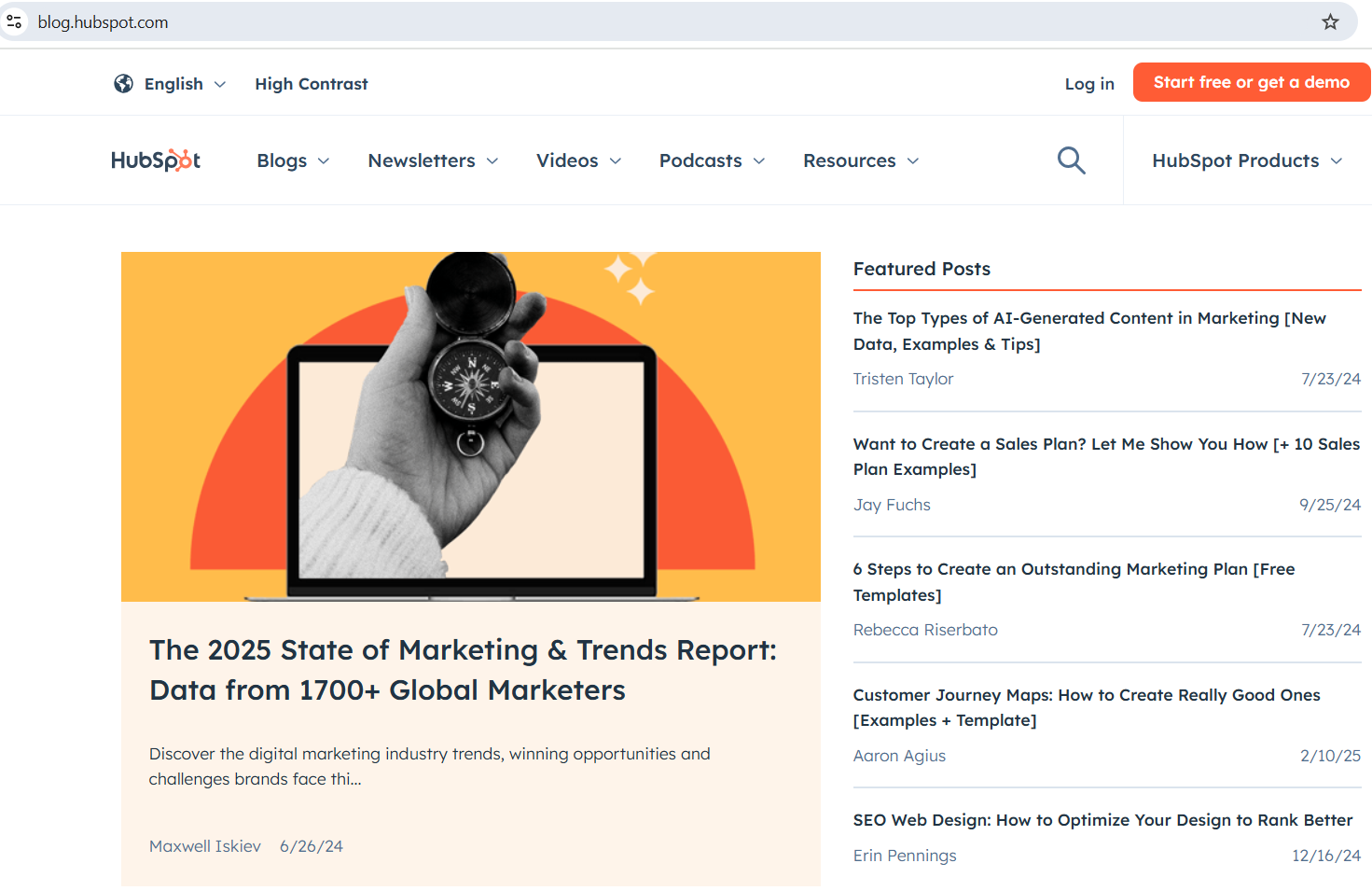
Advertising
Apple is running an image ad for its AirPods 4 product. The aim is to persuade users to buy this product by clicking on the CTA “learn more.” On clicking the link, you can go straight to the product’s page and place an order for that. They have used paid media (LinkedIn) to get sales as a goal.

Final Thoughts
The ultimate goal of both marketing and advertising is increasing sales and profitability; the methods by which they do this tend to differ. Marketing needs advertising as one of its strategies for promotion.
Marketing is a holistic approach that consists of advertising as one of the key components. It takes both marketing and advertising to make a successful brand.
Despite having different textbook definitions, marketing and advertising are sometimes used interchangeably. In this blog, we tried to list down basic differences between the two to understand the marketing dynamics well.
